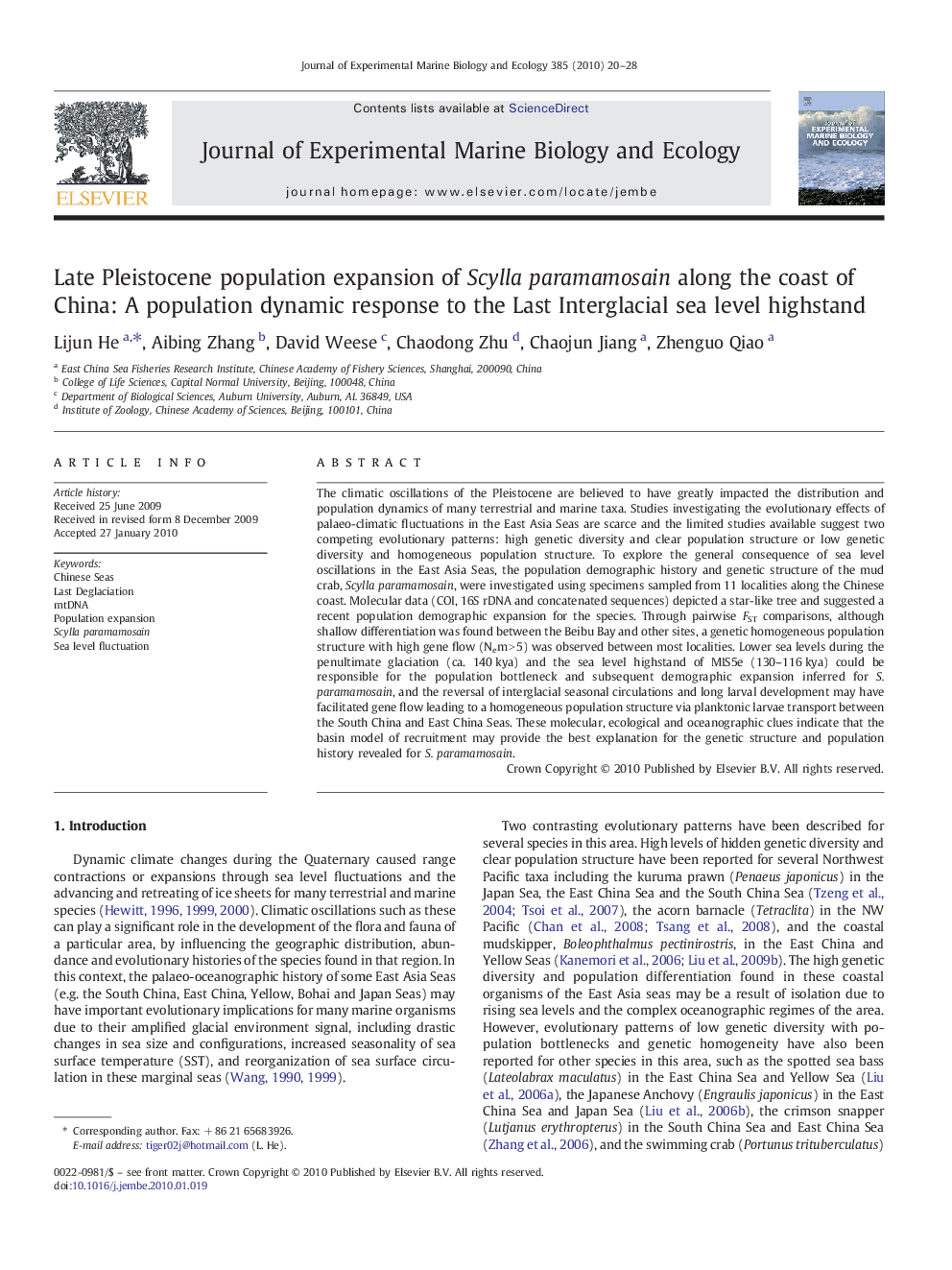| کد مقاله | کد نشریه | سال انتشار | مقاله انگلیسی | نسخه تمام متن |
|---|---|---|---|---|
| 4396726 | 1618475 | 2010 | 9 صفحه PDF | دانلود رایگان |
عنوان انگلیسی مقاله ISI
Late Pleistocene population expansion of Scylla paramamosain along the coast of China: A population dynamic response to the Last Interglacial sea level highstand
دانلود مقاله + سفارش ترجمه
دانلود مقاله ISI انگلیسی
رایگان برای ایرانیان
کلمات کلیدی
موضوعات مرتبط
علوم زیستی و بیوفناوری
علوم کشاورزی و بیولوژیک
علوم آبزیان
پیش نمایش صفحه اول مقاله

چکیده انگلیسی
The climatic oscillations of the Pleistocene are believed to have greatly impacted the distribution and population dynamics of many terrestrial and marine taxa. Studies investigating the evolutionary effects of palaeo-climatic fluctuations in the East Asia Seas are scarce and the limited studies available suggest two competing evolutionary patterns: high genetic diversity and clear population structure or low genetic diversity and homogeneous population structure. To explore the general consequence of sea level oscillations in the East Asia Seas, the population demographic history and genetic structure of the mud crab, Scylla paramamosain, were investigated using specimens sampled from 11 localities along the Chinese coast. Molecular data (COI, 16S rDNA and concatenated sequences) depicted a star-like tree and suggested a recent population demographic expansion for the species. Through pairwise FST comparisons, although shallow differentiation was found between the Beibu Bay and other sites, a genetic homogeneous population structure with high gene flow (Nem > 5) was observed between most localities. Lower sea levels during the penultimate glaciation (ca. 140 kya) and the sea level highstand of MIS5e (130-116 kya) could be responsible for the population bottleneck and subsequent demographic expansion inferred for S. paramamosain, and the reversal of interglacial seasonal circulations and long larval development may have facilitated gene flow leading to a homogeneous population structure via planktonic larvae transport between the South China and East China Seas. These molecular, ecological and oceanographic clues indicate that the basin model of recruitment may provide the best explanation for the genetic structure and population history revealed for S. paramamosain.
ناشر
Database: Elsevier - ScienceDirect (ساینس دایرکت)
Journal: Journal of Experimental Marine Biology and Ecology - Volume 385, Issues 1â2, 1 April 2010, Pages 20-28
Journal: Journal of Experimental Marine Biology and Ecology - Volume 385, Issues 1â2, 1 April 2010, Pages 20-28
نویسندگان
Lijun He, Aibing Zhang, David Weese, Chaodong Zhu, Chaojun Jiang, Zhenguo Qiao,